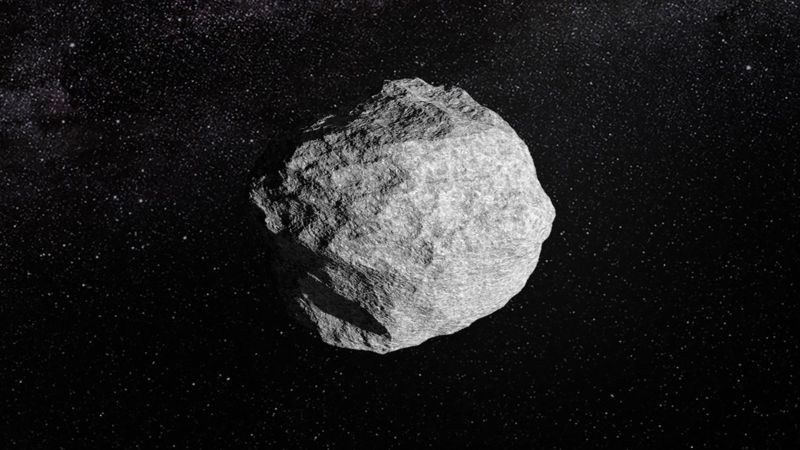The astronomy community has recently turned its attention to a newly discovered asteroid known as 2024 YR4, which poses a slight risk of impacting Earth. The European Space Agency (ESA) has calculated that this celestial object has a 2.2% chance of striking our planet on December 22, 2032. This update comes after previous assessments indicated a 1.2% likelihood, demonstrating that as astronomers gather more observational data, the risk assessment can shift. The situation highlights the dynamic nature of asteroid tracking, as indicated by numerous revelations over the past week.
Astronomers expect the probability of impact for 2024 YR4 to fluctuate as they continue observing its trajectory. The European Space Agency has noted that patterns in the tracking of near-Earth asteroids often show that initial risks may rise and fall based on refined observations of their orbits. For example, the infamous asteroid Apophis was initially labeled as a significant threat upon its discovery in 2004, only to be cleared of any such risk in a 2021 orbit re-evaluation. Gary Chodas from NASA’s Center for Near Earth Object Studies elaborated on this process: the more data astronomers collect, the better their understanding of an asteroid’s trajectory becomes.
The current metrics estimate that asteroid 2024 YR4 measures between 131 and 295 feet (40 to 90 meters) in diameter, a range that Dr. Chodas compares to that of a large building. Accurate determination of its size is paramount, as the asteroid’s impact potential largely corresponds with its dimensions. In terms of potential damage, should the asteroid collide with Earth—an event considered unlikely—scientists warn that it could have catastrophic consequences, with blast damage extendable up to 50 kilometers (31 miles) from ground zero due to its anticipated high velocity of around 17 kilometers per second (38,028 miles per hour).
To put this potential threat into perspective, the ESA points to past asteroid impacts that have caused significant destruction. Notably, in 1908, an asteroid roughly 30 meters wide devastated a vast stretch of land in the Tunguska region of Siberia. Years later, in 2013, another asteroid, measuring 20 meters across, entered the atmosphere over Chelyabinsk, Russia, unleashing an explosive force many times greater than that of the atomic bomb. That incident led to major damage and injuries, underscoring the need for vigilance over such cosmic objects.
The discovery of 2024 YR4 was made using the Asteroid Terrestrial-impact Last Alert System (ATLAS) telescope located in Rio Hurtado, Chile, on December 27, 2022. developed by NASA, this asteroid observation program is geared towards cataloging and assessing near-Earth asteroids. Following its identification, automated alert systems propelled 2024 YR4 to the forefront of risk assessments by both the ESA and NASA’s Sentry risk list.
Since January, astronomers across various observatories, including those in New Mexico and Chile, have been working diligently to track 2024 YR4, which currently lies over 28 million miles (45 million kilometers) from Earth. As the asteroid continues its orbit, it is expected to dim, highlighting the need for larger telescopes to maintain observations. As time progresses, the window to observe the asteroid narrows; it is set to disappear from view around early April until it re-emerges near 2028.
Throughout this period, should 2024 YR4 become too faint to track, it will remain on the risk list until its visibility again. Nevertheless, astronomers assert that the ongoing collection of data is crucial; the longer they monitor asteroid 2024 YR4, the more precise their predictions will be. Notably, NASA and ESA routinely track thousands of near-Earth asteroids. However, not all objects are easily observable, emphasizing the significance of technological advancements in asteroid detection.
Faced with the potential risks posed by asteroids like 2024 YR4, two international response groups endorsed by the United Nations—namely, the International Asteroid Warning Network and the Space Mission Planning Advisory Group—are on standby to coordinate tracking efforts and strategize mitigation measures. The advisory group will evaluate various options for preventing or minimizing potential impacts, drawing from past experiments like NASA’s Double Asteroid Redirection Test (DART).
As the monitoring continues, both NASA and ESA are committed to assessing the situation further, with meetings planned to address the evolving threat level of 2024 YR4. The primary aim remains clear: to refine observations and debunk any exaggerated fears surrounding the asteroid’s impact likelihood, thereby ensuring a well-informed public and scientific community.



